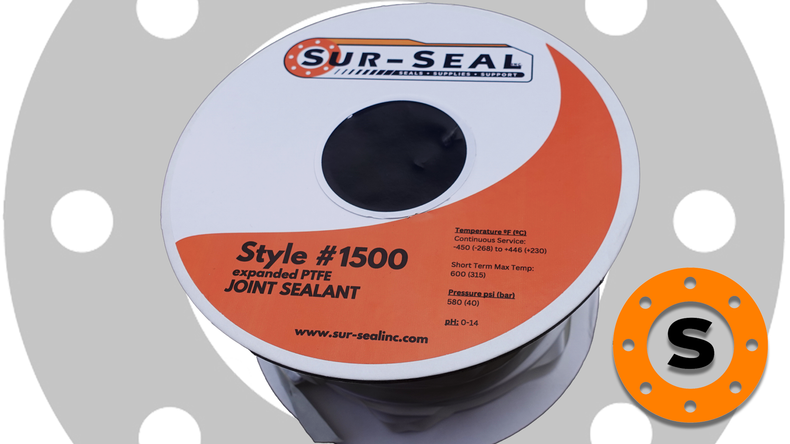Expanded PTFE joint sealant is a versatile and essential material widely used across various industries due to its unique properties and superior performance. Derived from polytetrafluoroethylene (PTFE) through a process that creates a microporous structure, ePTFE offers enhanced flexibility, chemical resistance, and temperature stability.
In this comprehensive guide, we will delve into the intricate details of ePTFE joint sealants, the application methods for ePTFE sealants and highlights their common uses in industries such as chemical processing, pharmaceuticals, food and beverage, electronics, power generation, automotive, aerospace, HVAC, plumbing, and water treatment. The combination of technical insights and practical guidance underscores the critical role ePTFE joint sealants play in ensuring reliable, durable, and leak-proof seals in demanding environments.
The manufacturing process of ePTFE joint sealants involves a series of precise steps to ensure the highest quality and performance. From the initial blending of raw materials to the extrusion and expansion processes, each stage plays a vital role in creating a reliable and durable sealant product. Understanding this process not only provides insight into the product's quality but also helps in selecting the right type of ePTFE joint sealant for specific applications.
ePTFE joint sealants offer a myriad of advantages that make them stand out in the world of sealing solutions. Additionally, ePTFE joint sealants exhibit exceptional durability, ensuring long-lasting sealing efficiency and reducing maintenance costs. Their versatility allows for easy installation and reliable sealing performance, contributing to overall operational reliability. Furthermore, the flexibility of ePTFE joint sealants accommodates flange irregularities, ensuring a tight and leak-free seal every time. Understanding the advantages of using ePTFE joint sealants can help maximize efficiency and safety in various industrial applications.
ePTFE joint sealants are versatile products with a wide range of applications across various industries. Their unique combination of flexibility, chemical resistance, and high temperature tolerance makes them ideal for demanding sealing environments. Common applications include pipeline connections, flange joints, heat exchangers, and valve stems. Understanding the diverse applications of ePTFE joint sealants can help in selecting the right product for specific sealing requirements.
While ePTFE joint sealants offer exceptional sealing performance, it is crucial to emphasize the significance of proper installation and maintenance techniques. Correct installation ensures optimal sealing efficiency and longevity of the sealant, preventing leaks and costly downtime. Regular maintenance, including inspections and replacements when necessary, helps uphold the integrity of the seal and prolong its service life. By adhering to recommended installation procedures and maintenance schedules, you can maximize the benefits of ePTFE joint sealants in various applications, ensuring consistent performance and operational reliability.
Applying ePTFE joint sealant is a straightforward process, but it requires careful handling to ensure a proper seal and optimal performance.
Here are the general steps for applying ePTFE joint sealant:
Tips for Effective Application of ePTFE Joint Sealant
- Storage: Store ePTFE sealant in a cool, dry place to maintain its properties before use.
- Handling: Handle the sealant carefully to avoid contamination or damage to its structure.
- Compatibility: Ensure the ePTFE sealant is compatible with the media and operating conditions of the application, such as temperature, pressure, and chemical exposure.
- Ensure Cleanliness: The surfaces to be sealed must be clean, dry, and free from any contaminants such as oil, grease, dust, or old gasket material
- Use Appropriate Cleaners: Use a suitable solvent or cleaner to remove any residues. Allow the surfaces to dry completely before application.
- Check for Damage: Inspect the surfaces for any damage, such as scratches, pitting, or corrosion, that might impair the sealing effectiveness. Repair or smooth out any imperfections as necessary
- Cut to Length: Cut the ePTFE joint sealant to the required length using a sharp knife or scissors. For continuous rolls, ensure you cut enough to overlap slightly at the ends.
- Peel Backing (if applicable): Some ePTFE sealants come with an adhesive backing. Peel off the protective backing to expose the adhesive.
- Align the Sealant: Start at one end of the joint or flange, and carefully position the ePTFE sealant along the sealing surface. Press it down gently to adhere it to the surface.
- Avoid Stretching: Do not stretch the sealant during application, as this can compromise its effectiveness.
- Overlap for Continuous Seal: If the ends need to meet, ensure a proper overlap (typically about an inch) to create a continuous seal. Press the overlapping sections together firmly.
- Avoid Gaps: Make sure there are no gaps or voids where the ends meet, as this could lead to leaks.
- Secure the Seal: Align the components, tighten the bolts in a cross pattern to assure even distribution and use recommended torque.
- Check Seal: Visually inspect looking for even distribution and avoiding extrusion. Pressure test the seal.
By following these steps and taking care during each stage of the application, you can ensure a reliable and effective seal with ePTFE joint sealant, suitable for various industrial and mechanical applications.
In conclusion, selecting the appropriate ePTFE joint sealant for your specific application is paramount to ensure optimal performance. Factors such as temperature, pressure, chemical exposure, and size of the joint play a crucial role in determining the suitability of the sealant. Understanding the unique requirements of your sealing application will help you match the right ePTFE joint sealant to achieve superior sealing efficiency.
Consult with industry experts like Sur-Seal Inc to gain insights into the different types of ePTFE joint sealants available and their compatibility with your sealing environment. Making an informed choice will not only enhance sealing effectiveness but also contribute to the longevity and reliability of your sealing solution. Remember, a well-chosen ePTFE joint sealant can significantly improve the performance and durability of your seals.



